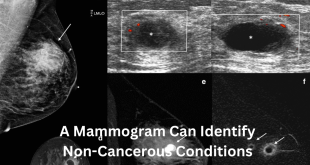Anxiety disorders affect millions worldwide, disrupting daily life and often overshadowing personal well-being. These conditions encompass a spectrum of debilitating mental health issues, from generalized anxiety disorder (GAD) to panic disorder, social anxiety disorder, and specific phobias. Understanding the science behind anxiety disorders not only sheds light on their complexity but also informs effective treatments and interventions.
Defining anxiety disorders
Anxiety disorders are characterized by excessive worry, fear, or apprehension. Unlike normal anxiety triggered by stressful situations, these disorders persist over time, impacting how individuals think, feel, and behave. They can manifest in various forms:
- Generalized Anxiety Disorder (GAD): persistent and excessive worry about everyday life events.
- Panic Disorder: sudden and repeated attacks of fear that can trigger physical symptoms like heart palpitations or sweating.
- Social anxiety disorder: intense fear of social situations, often leading to avoidance of social interactions.
- Specific Phobias: Irrational fear of specific objects or situations, such as heights or spiders.
Neurobiology of Anxiety
Complex interactions within the brain and nervous system are the root cause of anxiety disorders. Research indicates that there are several key neurobiological factors at play:
Neurotransmitters and Brain Chemistry
Neurotransmitters like serotonin, gamma-aminobutyric acid (GABA), and norepinephrine play crucial roles in regulating mood and anxiety. Imbalances in these neurotransmitters can contribute to the onset and severity of anxiety disorders.
The Amygdala and Fear Responses
The amygdala, a brain structure involved in processing emotions, plays a central role in fear conditioning and response. Individuals with anxiety disorders often show heightened activity in the amygdala, leading to exaggerated fear responses.
Hypothalamic-Pituitary-Adrenal (HPA) Axis
The HPA axis regulates the body’s response to stress. In anxiety disorders, this system may become dysregulated, resulting in chronically elevated levels of cortisol and other stress hormones, contributing to anxiety symptoms.
Genetic and environmental factors
Anxiety disorders can also have a genetic component, with research suggesting a hereditary predisposition. Environmental factors such as childhood trauma, chronic stress, or major life events can further influence the development and severity of these disorders.
Cognitive and behavioral models
Cognitive-behavioral models propose that anxiety disorders arise from maladaptive patterns of thinking and behavior. For instance, individuals may overestimate threats or catastrophize potential outcomes, perpetuating anxiety cycles.
Advances in Treatment Approaches
Understanding the science of anxiety disorders has paved the way for effective treatments.
Medication
Doctors frequently prescribe selective serotonin reuptake inhibitors (SSRIs), serotonin-norepinephrine reuptake inhibitors (SNRIs), and benzodiazepines to treat neurotransmitter imbalances and alleviate symptoms.
Cognitive-Behavioral Therapy (CBT)
CBT helps individuals identify and modify negative thought patterns and behaviors associated with anxiety. It has demonstrated long-term efficacy in treating anxiety disorders by addressing underlying cognitive distortions.
Mindfulness-Based Therapies
Mindfulness techniques, such as meditation and mindful breathing, can reduce anxiety symptoms by promoting present-moment awareness and acceptance.
Lifestyle Modifications
Regular exercise, adequate sleep, and stress management techniques like yoga or progressive muscle relaxation can complement clinical treatments, improving overall well-being.
The Future of Anxiety Research
Ongoing research continues to deepen our understanding of anxiety disorders. Advances in neuroimaging technologies allow for precise mapping of brain activity patterns in anxiety, while genetic studies explore susceptibility genes. Such insights promise more personalized and effective approaches to treatment.
Anxiety disorders are among the most common mental health conditions globally, affecting millions of individuals of all ages and backgrounds. This article explores the nature of anxiety disorders, their various types, symptoms, and approaches to treatment.
Types of Anxiety Disorders
Generalized Anxiety Disorder (GAD)
GAD is characterized by excessive worry and anxiety about a wide range of events or activities. Individuals with GAD often anticipate disaster and may be overly concerned about health, money, work, or other issues, even when there is little or no reason to worry.
Panic Disorder
Panic disorder involves recurrent and unexpected panic attacks, which are sudden periods of intense fear or discomfort. These attacks may include symptoms such as palpitations, sweating, trembling, shortness of breath, and feelings of impending doom.
Social Anxiety Disorder
Social anxiety disorder, or social phobia, involves intense fear of social situations where individuals may be scrutinized or judged by others. This fear can be so severe that it interferes with work, school, and other everyday activities.
Specific Phobias
Specific phobias are characterized by intense fear or anxiety about specific objects or situations, such as heights, flying, animals, or seeing blood. The fear experienced is excessive and unreasonable, leading to avoidance of the phobic stimulus.
Symptoms of Anxiety Disorders
Physical Symptoms
- Increased heart rate
- Rapid breathing or hyperventilation
- Sweating
- Trembling or shaking
- Feeling weak or tired
- Gastrointestinal problems (e.g., upset stomach, diarrhea)
Emotional and Psychological Symptoms
- Feelings of apprehension or dread
- Restlessness or irritability
- Difficulty concentrating or mind going blank
- Trouble sleeping or staying asleep
- Avoidance of situations that provoke anxiety
Causes and Risk Factors
Biological Factors
Genetics, brain chemistry, and disruptions in the brain’s neurotransmitter systems (e.g., serotonin, dopamine) play a role in the development of anxiety disorders. Individuals with a family history of anxiety disorders may be more prone to developing these conditions.
Environmental Factors
Stressful life events, trauma, childhood adversity, and major life changes can trigger or exacerbate anxiety disorders. Chronic stress can also contribute to the development of anxiety symptoms.
Psychological Factors
Personality traits such as perfectionism, negative thinking patterns, and excessive worry can contribute to the development or maintenance of anxiety disorders. Additionally, individuals with low self-esteem or who have a history of anxiety-related coping mechanisms may be at higher risk.
Treatment Approaches
Therapy
- Cognitive-Behavioral Therapy (CBT): CBT helps individuals identify and change negative thought patterns and behaviors that contribute to anxiety. It focuses on teaching coping skills and relaxation techniques to manage anxiety symptoms effectively.
- Exposure Therapy: Exposure therapy involves gradually exposing individuals to feared objects or situations in a safe and controlled environment. This approach helps reduce fear and anxiety over time.
Medication
- Antidepressants: Selective serotonin reuptake inhibitors (SSRIs) and serotonin-norepinephrine reuptake inhibitors (SNRIs) are commonly prescribed medications for anxiety disorders. They work by affecting neurotransmitter levels in the brain to reduce symptoms of anxiety.
- Benzodiazepines: These medications may be prescribed for short-term relief of severe anxiety symptoms. However, they are generally used cautiously due to the risk of dependence and side effects.
Lifestyle and Self-Care
- Regular Exercise: Physical activity can help reduce anxiety by promoting relaxation and improving mood.
- Healthy Diet: Eating a balanced diet and limiting caffeine and alcohol intake can help manage anxiety symptoms.
- Stress Management Techniques: Techniques such as deep breathing, progressive muscle relaxation, and mindfulness meditation can reduce stress and promote relaxation.
Living with Anxiety Disorders
Living with an anxiety disorder can be challenging, but with proper treatment and support, individuals can manage their symptoms effectively. It’s essential to seek help from mental health professionals and develop a support network of family, friends, and peers who understand and provide encouragement.
Conclusion
Anxiety disorders are multifaceted conditions shaped by neurobiological, genetic, and environmental factors. The evolving field of anxiety research underscores the importance of integrated approaches to treatment, combining pharmacological interventions, psychotherapy, and lifestyle modifications. By unraveling the science behind anxiety disorders, researchers and clinicians strive to enhance outcomes and alleviate the burden of these pervasive mental health challenges.
Anxiety disorders are complex mental health conditions that can significantly impact an individual’s daily life and well-being. However, with early intervention, appropriate treatment, and support, many people with anxiety disorders can lead fulfilling lives. It’s crucial to raise awareness, reduce stigma, and promote understanding of anxiety disorders to ensure individuals receive the help they need to manage their symptoms and improve their quality of life.
This article explores the intricate science underpinning anxiety disorders, highlighting the strides made in understanding and treating these prevalent conditions.







